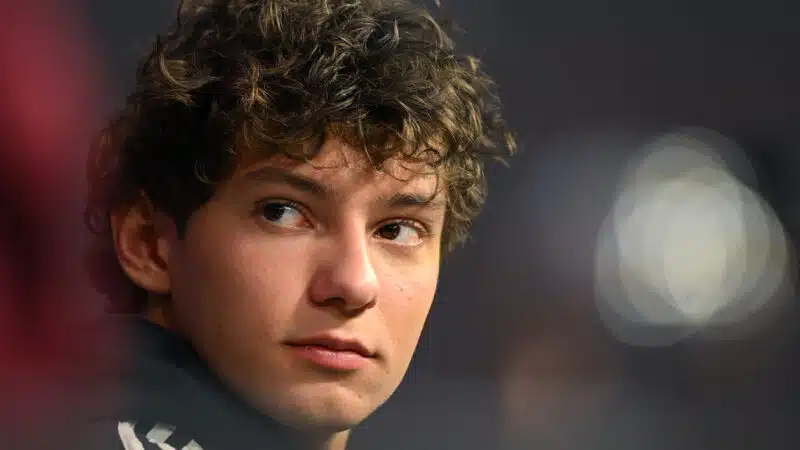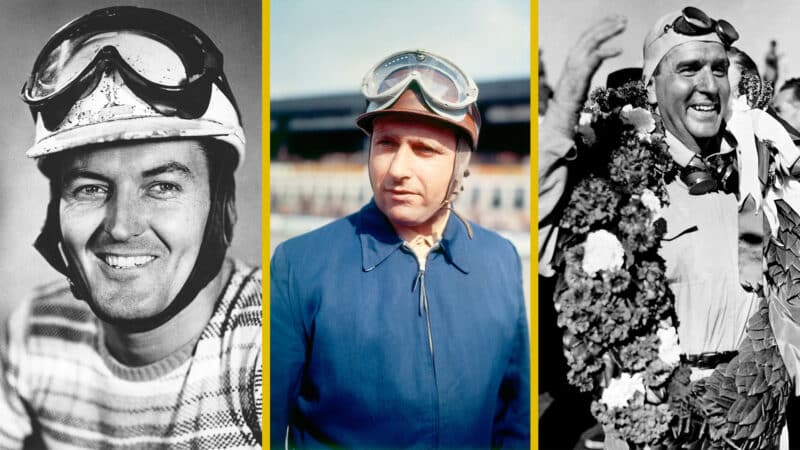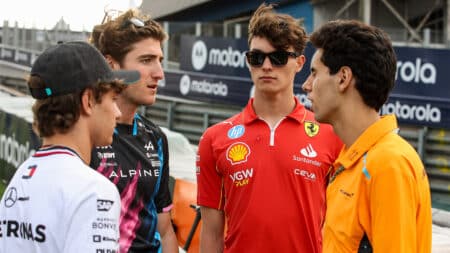So that leaves just seven genuine F1 rookies who have won world championship-status F1 grands prix in their first F1 seasons, and it is a fascinating little list. (Note to pedants: I have not included Bruce McLaren, although he won the United States Grand Prix in the first year in which he raced an F1 car, 1959, because he had raced in two world championship-status F1 grands prix the year before, 1958, finishing fifth at Nürburgring and 13th at Ain-Diab, albeit at the wheel of an F2 car rather than an F1 car.)
After the statistical anomalies served up in 1950, we had to wait 11 long years for F1’s first genuine rookie grand prix win. Having raced well in Formula Junior in the late 1950s, Giancarlo Baghetti became the beneficiary of the backing of the Federazione Italiana Scuderie Automobilistiche (FISA), an organisation supported by the great and the good of Italian motor sport, its aim being to help a young Italian driver into F1, following the deaths of Eugenio Castellotti in 1957 and Luigi Musso in 1958, fine Italian F1 drivers both.
So it was that FISA made available an ex-works Ferrari 156 for Baghetti to drive in two non-championship F1 races — in April 1961 at Syracuse, Sicily, and in May 1961 at Posillipo, Naples — and he won them both. Better still, FISA then entered him and its Ferrari for the French Grand Prix at Reims, the fourth world championship-status grand prix of the 1961 F1 season. He qualified FISA’s Fezza (sorry, I couldn’t resist!) 12th, well behind the three drivers in the works Ferraris — Phil Hill, Wolfgang von Trips, and Richie Ginther, who qualified first, second, and third — but they all struck trouble and Baghetti ran out the unexpected winner, finishing an exciting race half a car length ahead of Dan Gurney’s works Porsche 718.
Baghetti then raced a Scuderia Sant Ambroeus-entered Porsche 718 to victory in the non-championship F1 Coppa Italia at Vallelunga, near Rome, in October 1961, but that was about the end of it for him as far as F1 glory was concerned, for he started 20 further world championship-status F1 grands prix over the next six seasons, and his best result was fourth in a works Ferrari at Zandvoort in 1962.
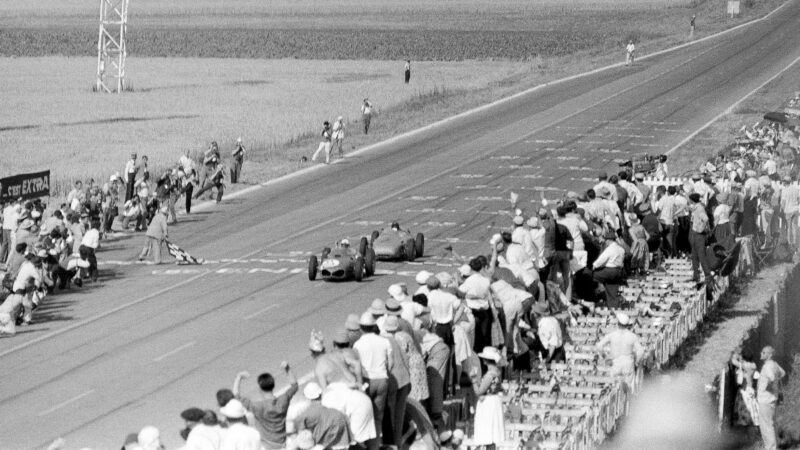
Giancarlo Baghetti wins at Reims, 1961
Getty Images
In May 1965, in a BRM P261, 25-year-old Jackie Stewart won the non-championship F1 International Trophy at Silverstone, after which he raced the car for the remainder of that F1 world championship season. He retired it three times — at Nürburgring and Watkins Glen with suspension failure and in Mexico City with a broken clutch — but the rest of that precocious young rookie’s results were stellar that year, the highlights third place at Monaco, second places at Spa, Clermont-Ferrand, and Zandvoort, and a win at Monza.
Five years later, in 1970, not one but two F1 rookies won world championship-status F1 grands prix — Clay Regazzoni (Ferrari) at Monza, his fifth F1 grand prix start, and Emerson Fittipaldi (Lotus) at Watkins Glen, his fourth. If you read my column often, or you follow me on Twitter/X or BlueSky, you will know that I love what I call ‘anorak facts’. So I cannot restrain myself from letting you know that at Monza in 1970 Regazzoni became the last driver to win an F1 grand prix wearing an open-face helmet, and that the race also marked the last time in F1 that the three podium finishers would race cars fitted with three different tyre brands: Regazzoni (Ferrari) on Firestones, Stewart (March) on Dunlops, and Jean-Pierre Beltoise (Matra) on Goodyears.
That 1970 Italian Grand Prix weekend had been cast in melancholy by the death in Saturday qualifying of Lotus’s team leader, Jochen Rindt — and Fittipaldi, Rindt’s young team-mate, did not therefore race on the Sunday. Nor did he race next time out, for Colin Chapman withdrew the team’s entry for the following grand prix, at Mont-Tremblant. But the still-grieving Lotus lads made the trip to Watkins Glen, for the next round, and there it was that 23-year-old Fittipaldi raced a Lotus 72 for the first time, having theretofore been saddled with an old 49. He qualified his 72 third, he won the race, and, although reporting of F1 was more conservative then than it is now, as a result of which journalistic diffidence the hype on the pages of magazines such as Motor Sport was light, you can imagine that, in the circumstances, Emerson’s victory was an extremely popular one.
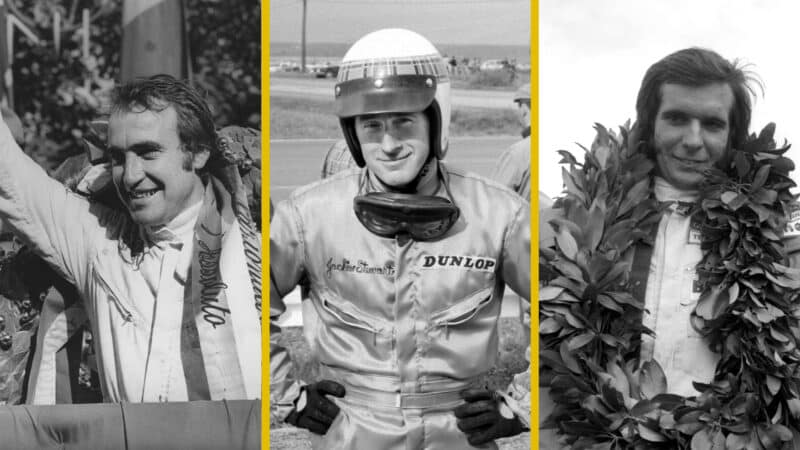
F1’s next rookie sensations (from left to right): Clay Regazzoni, Jackie Stewart and Emerson Fittipaldi
Getty Images
Twenty-six years later, Williams signed for the 1996 F1 season Jacques Villeneuve, who had won the 1995 CART championship with race wins at Miami, Indianapolis, Road America, and Cleveland. He would make his F1 grand prix debut in Melbourne — where he very nearly repeated Baghetti’s unique victory-first-time-out achievement, for he bagged the pole for, and led almost all of, his maiden F1 grand prix, only to suffer an oil leak, consequently having to give best to his team-mate Damon Hill with just five laps to go. Villeneuve nonetheless finished a fine second that day, but better was to come, for he won four times in his rookie F1 season — at Nürburgring, Silverstone, Hungaroring, and Estoril — and seven times the following year, thereby becoming 1997 F1 world champion.
By 2001 Juan Pablo Montoya, like Villeneuve a graduate from top-tier open-wheel racing in the States, had won CART races at Long Beach, Nazareth, Cleveland, Mid-Ohio, Chicago, Vancouver, and Rio de Janeiro — those seven all in 1999, in which year he became CART champion — and three more in 2000, at Milwaukee, Michigan, and Gateway (Madison). So, again like Villeneuve, by the time he made his F1 debut for Williams in Melbourne in 2001 he was already an experienced and successful single-seater ace. The Ferrari was the dominant F1 car that year — the Scuderia’s drivers Michael Schumacher and Rubens Barrichello won nine of the season’s 17 grands prix — but the Williams was a decent chassis and its BMW engine was very powerful, and, at superfast Monza, Montoya made good use of its prodigious grunt to win the race from the pole, thereby becoming the first and so far only Colombian driver to win in F1.
As is so often the case when it comes to F1 stats such as that which forms the premise of this column — ie, drivers who have won world championship-status F1 grands prix in their rookie seasons — the final name on the list is Lewis Hamilton, who in 2007 finished on the podium in each of his first nine F1 grands prix and ended up with four F1 grand prix victories that year, in Montreal, Indianapolis, Budapest, and Fuji.
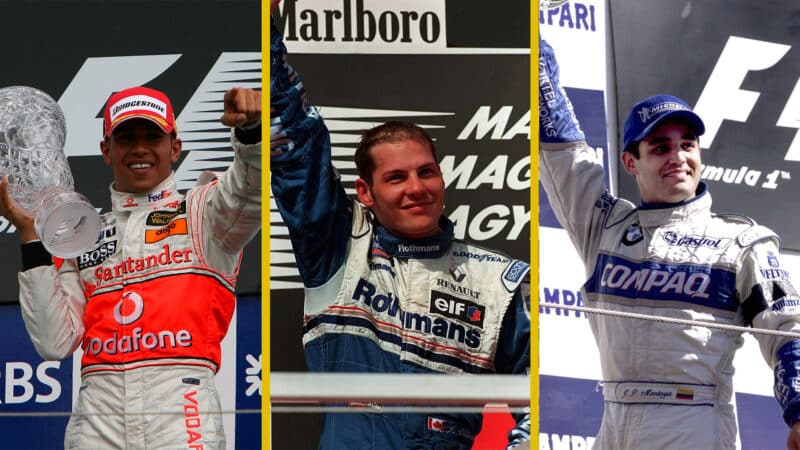
Can Antonelli follow in the wheeltracks of Hamilton (left), Villeneuve (middle) and Montoya (right)?
Getty Images
Many eyes will be on the 40-year-old Englishman in Melbourne next month, his maiden competitive outing for Ferrari a major attraction for journalists and fans alike, but the 18-year-old Italian in the Mercedes that Hamilton rejected will also be the focus of a lot of attention. I am not foretelling that Antonelli will win the 2025 Australian Grand Prix. But am I predicting that he will win an F1 grand prix at some point in 2025? I suppose, if you push me, I probably am, because Mercedes should produce a good car and he is very talented. If he proves me right, he will emulate Farina, Fangio, and Parsons — if you insist on their inclusion — but more genuinely Baghetti, Stewart, Regazzoni, Fittipaldi, Villeneuve, Montoya, and Hamilton, and I very much hope he does so, ideally in his home race at Monza, after a fair but spirited dice for the lead with Hamilton. Make it so!
